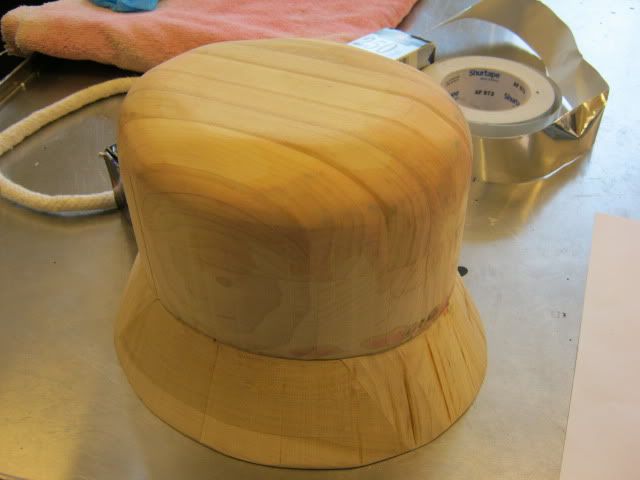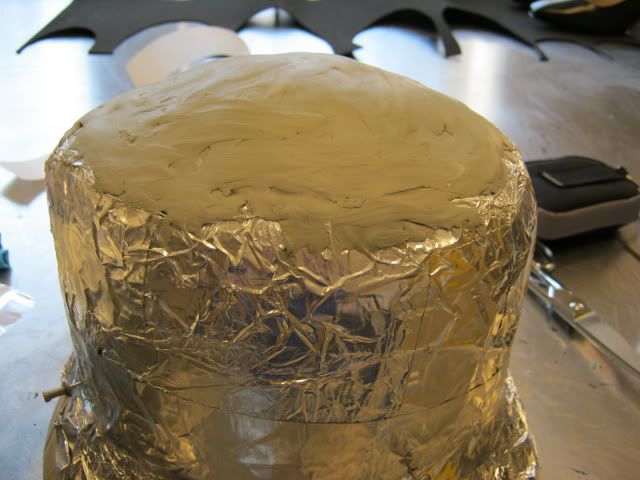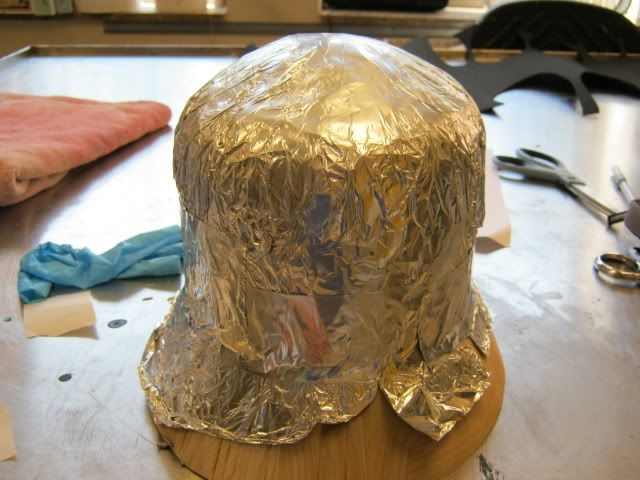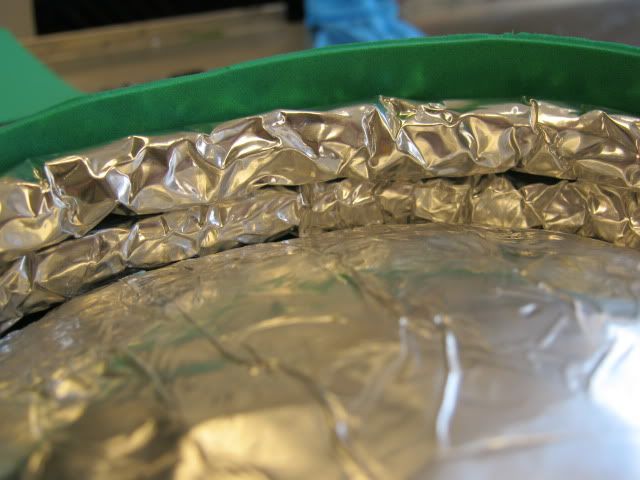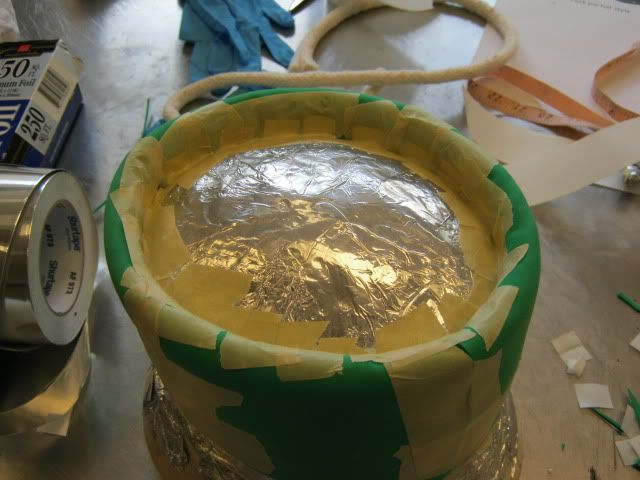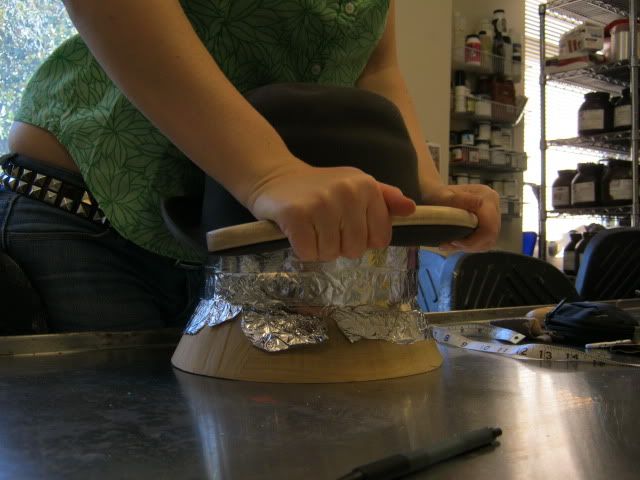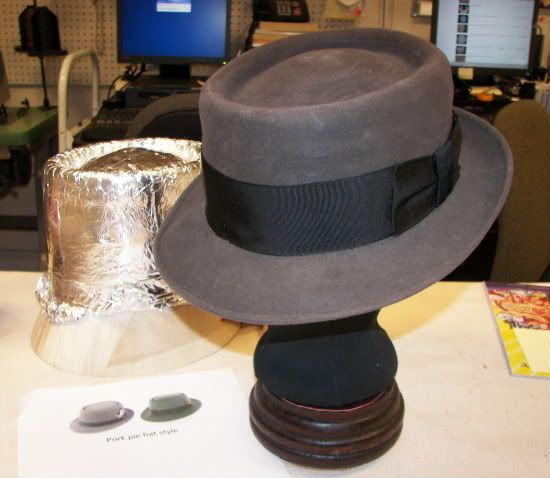The other day, I wrote about the first half of this story, namely, how the creative team and I came to the decision of what fabric pattern we were going to create, and how we were going to create it.
I left off with the choice of which sample fabric was going to be the one used in the show between two different base fabrics which had been batiked and
two different digitally-printed fabrics from Spoonflower. I knew that the one to go with was the batik on a muslin ground, so here's what happened next...

Samantha considers the research and the sample in planning pattern layout.
First, we needed to scale up the frame on which the batik would happen. Crafts Artisan and second-year graduate student Samantha Coles Greaves measured our steel printing table and got some 2x4s cut to fit its perimeter for maximum surface area of the design. Then with the help of her assistant
Adrienne Corral, they bolted the frame together, stretched a length of muslin and secured it to the frame with staple guns.
The muslin I purchase was PFD, which stands for "Prepared For Dyeing." This means it has no sizing or starch or other chemicals or finishes on the fabric which would impede the ability of the fibers to absorb dye. Fabrics which aren't sold as PFD will have sizes and starches and such in them and need to be laundered--sometimes multiple times--to remove those before they will dye well.
And, our muslin was larger than our frame by enough width that Samantha and Adrienne could staple it directly to the frame. If it were smaller or a delicate fabric or if we needed the dye treatment to go all the way to the edges, we'd have had to baste strips of framing fabric around it and use those to attach it to the frame.
We decided to use soy wax since it can be removed much easier than other kinds of batik wax--scrape off the excess then wash it in hot water cycles a few times, as opposed to boiling and skimming or ironing for days. We have a dedicated dyeshop microwave and melted the wax flakes (which you can buy in the candlemaking section at craft stores) in microwave safe containers. The wax dots are applied with a chubby round bristled brush.

Samantha Greaves applies the wax to the pristine muslin.

First, Samantha applied wax just to the white-dot portions of the design.

Red and brown fiber-reactive cold-process dye was applied to the areas
of the fabric where brown and red dots would go.

The full frame view at this stage of the process.

The frame and fabric got covered in plastic and left to sit overnight.
These kinds of dyes (Procion-type dyes) yield vibrant, dark colors on cotton fabrics, react with the fiber at room temperature, and are extremely washfast. They are safe to use (with nitrile gloves) in liquid form, and process fairly easily. In mixing them from dry form though, they are dangerous as particulates, being very easily airborne and shouldn't be inhaled. Samantha mixed ours into solution using an enclosed mixing box and particulate respiratory protection in our well-ventilated dye facility. If you use these dyes, it's safest to mix them into solution under these kind of circumstances (as opposed to, say, mixing them out in the open in a tiny room with your bare hands and sniffing around in the container of dry dyestuff or something).
The dyes need time to process--the longer the process time, the brighter the color yield if you have mixed your recipe right--and they need a moist environment in which to do it. Hence, the covering of the frame with plastic overnight. The dye facility has three huge (like 4' x 6') windows which face the setting sun, so Samantha and Adrienne drew the blinds as well to minimize evaporation from sun exposure/heat.

Adrienne and Samantha apply the next round of wax dots to the brown and red areas.
At this point, the process was repeated--mix the black dye solution safely, apply it to the wax dotted fabric, cover with plastic and wait overnight. Then the wax was scraped, the fabric washed several times in hot cycles and it was the moment of truth: how did it turn out?

My hand against the pattern for scale.
Beautiful!!

Design rendering for how the fabrics will be worn by the Players.
I think I mentioned previously that this show has three Players who perform a wide range of roles, changing character sometimes instantly and in full view of the audience. So, the feasibility of elaborate costume changes is minimal--they will have base costumes in neutral colors, plain trousers and tops that can be utilized to create character themselves (rolled up pant cuffs for sailors, for example, rolled shirt-sleeves for a barkeep) and added-on pieces to augment that. A flat cap for a newsboy, an apron for a mother cooking breakfast, etc. So, this rendering illustrates the fabric Samantha and Adrienne have made and how it is worn by the actors to "become" the characters of Yamba and her father Gunda. (Yamba has a baby brother, Bobo, who will be a doll dressed in the same fabric.)
I should note that, we are able to do this kind of work because we have such timely and clear communication among our design team, and because we started early enough with everything I wrote about yesterday to be at a point now that Samantha and Adrienne and I can spend three afternoons batiking one length of fabric. This kind of element of a show would not be possible if it were something the design team came up with two days before opening night, just because of the combination of active work time and passive dye-processing time.
This is something we talk about in all of my crafts classes--that there's almost nothing a skilled artisan can't do with the right amount of time, resources and skill. I teach the skills, and I expose them to and educate them about the resources and media. I can't, however, teach them how to bend time--that's the one constant factor which no theatre company can surmount if they fall short. So, learning about time-management, labor planning and process planning like this project has demonstrated is an invaluable part of our graduate program and our work as artists and artisans and professionals.
I'm so proud of my students on this project, in which I pretty much had to step away from my "usual" role as crafts artisan, function in the role of the designer and consultant and just let them run with it. They did such beautiful work, and I can't wait to see this fabric onstage, wrapped around our excellent cast members and flying as a sail above the ship they'll build every night, right there on our stage.
–Rachel E. Pollock, Shipwrecked! Costume Designer


























